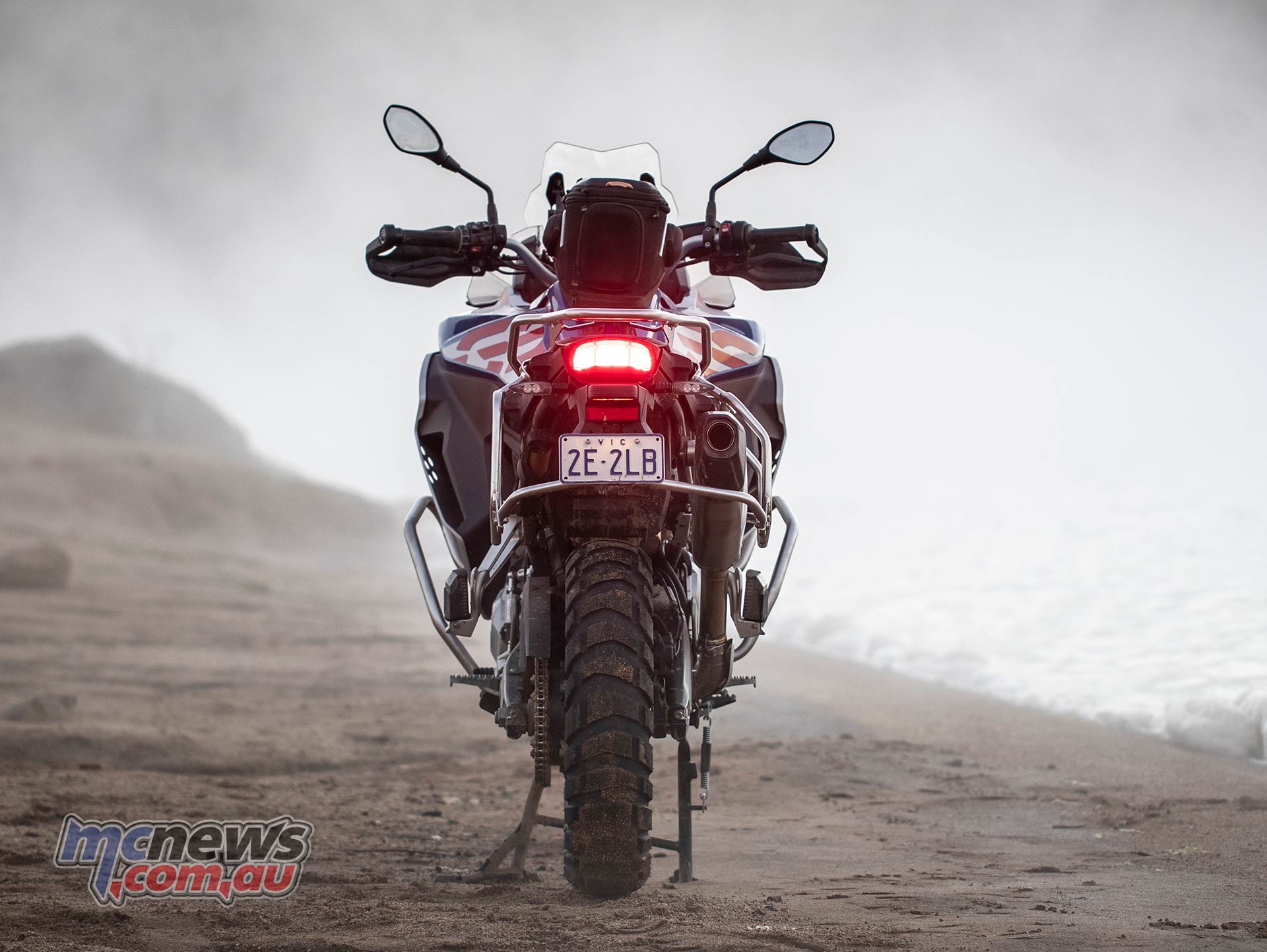2019 BMW F 850 GS Adventure Review
Motorcycle tested by Trevor Hedge
Images by Dean Walters and TH
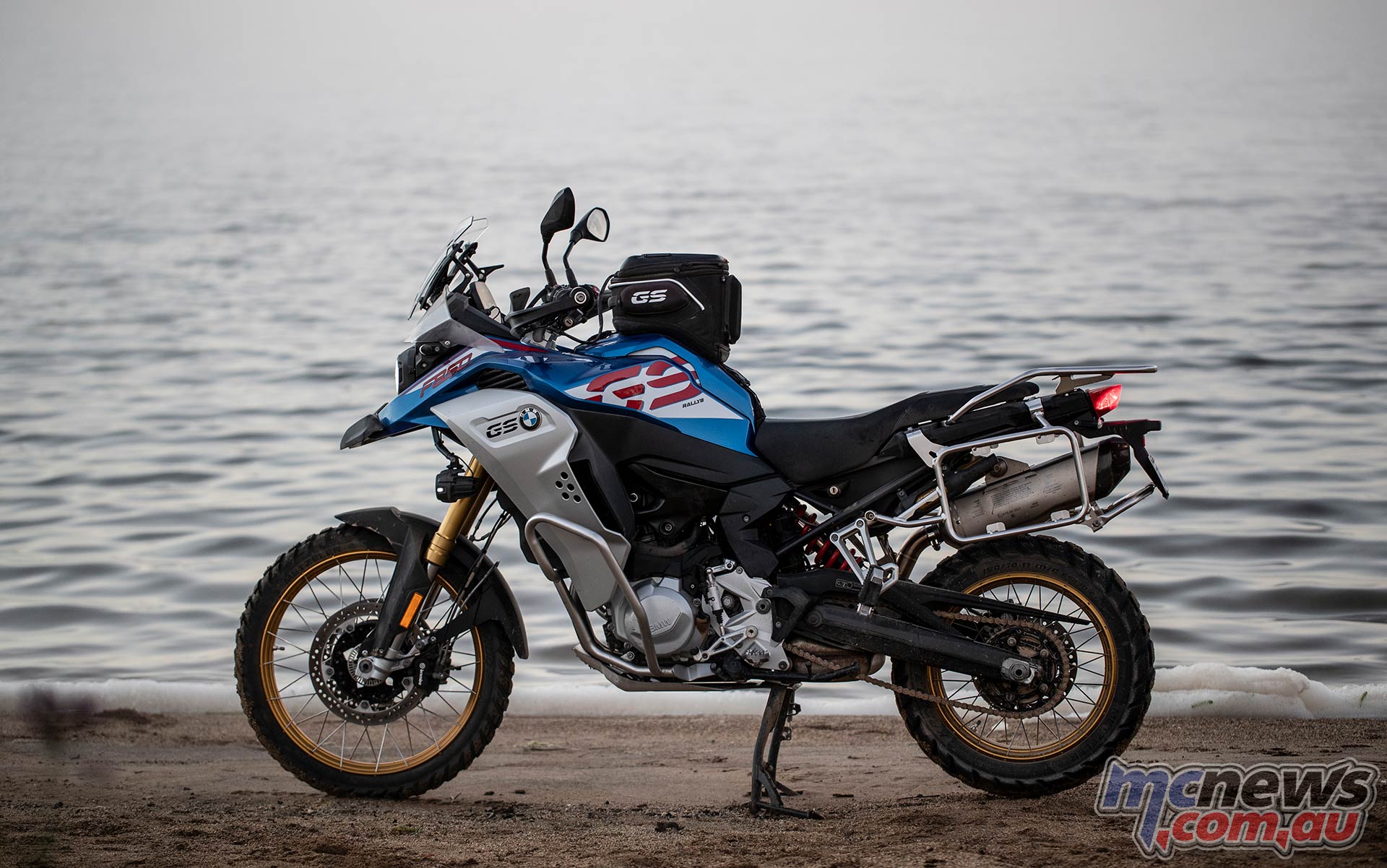
The mid-capacity twin-cylinder adventure bike market is about to get so much hotter in 2019 with the arrival of KTM’s 790 Adventure, and then later in the year Yamaha’s new Tenere 700. BMW have long occupied a popular spot in this capacity range with the hugely successful F 800 GS. With new opposition coming to spoil BMW’s party they knew they had to do something in order to stave off these new challenges in this important segment of the adventure market, enter the 2019 BMW F 850 GS Adventure.
This is perhaps the most comprehensive update since the F range of parallel-twin bikes first hit the market a decade ago.
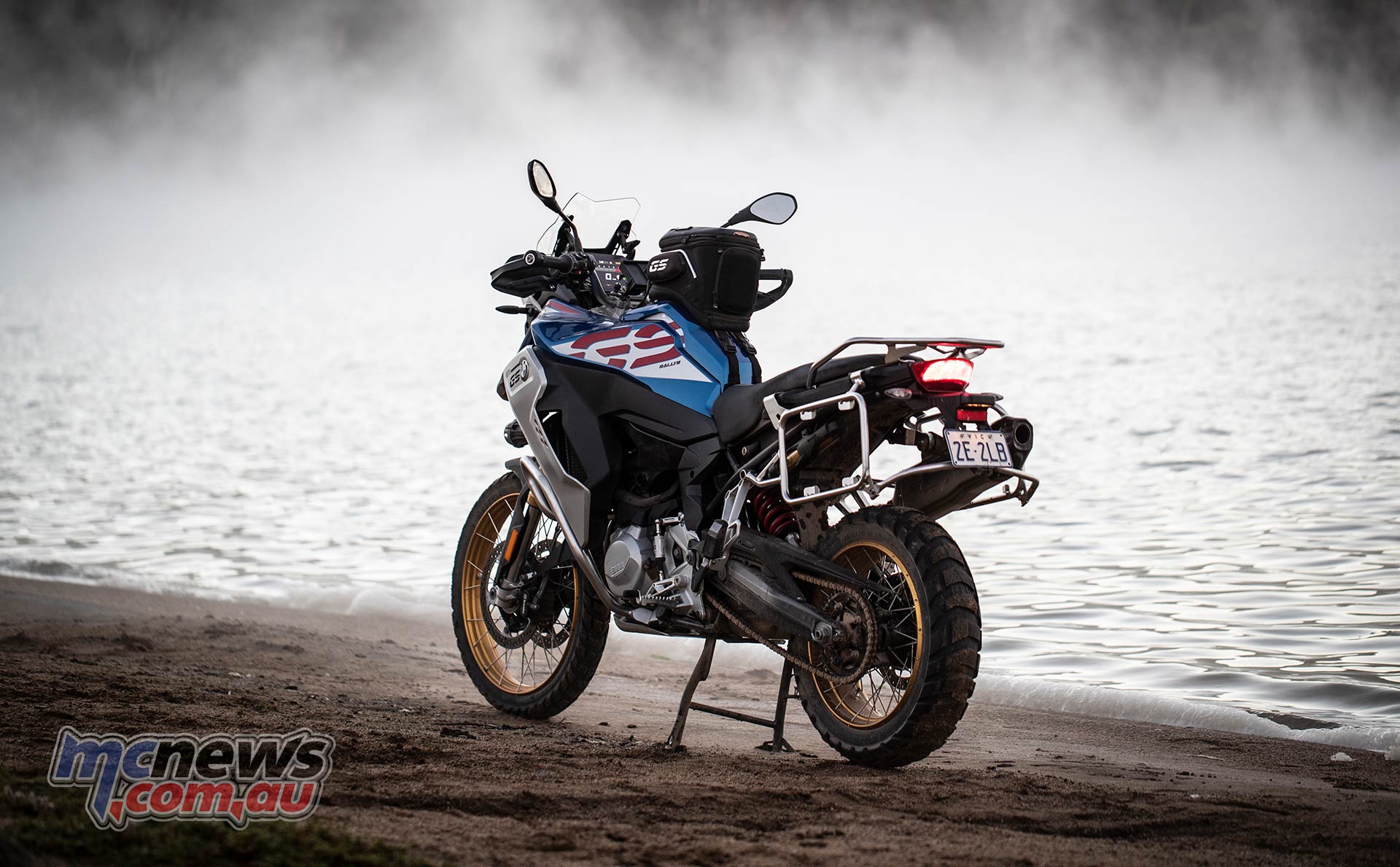
My primary criticisms of its predecessors focussed on the somewhat bland power delivery of the original, and that it never had any real visual presence or aesthetic appeal.
It is in these two areas where the F 850 GS differs most from its predecessors.
It now looks tougher and far more appealing, especially in the blue rallye colour scheme, and that fluffy parallel twin now has some bark, both out the pipe and at the throttle.
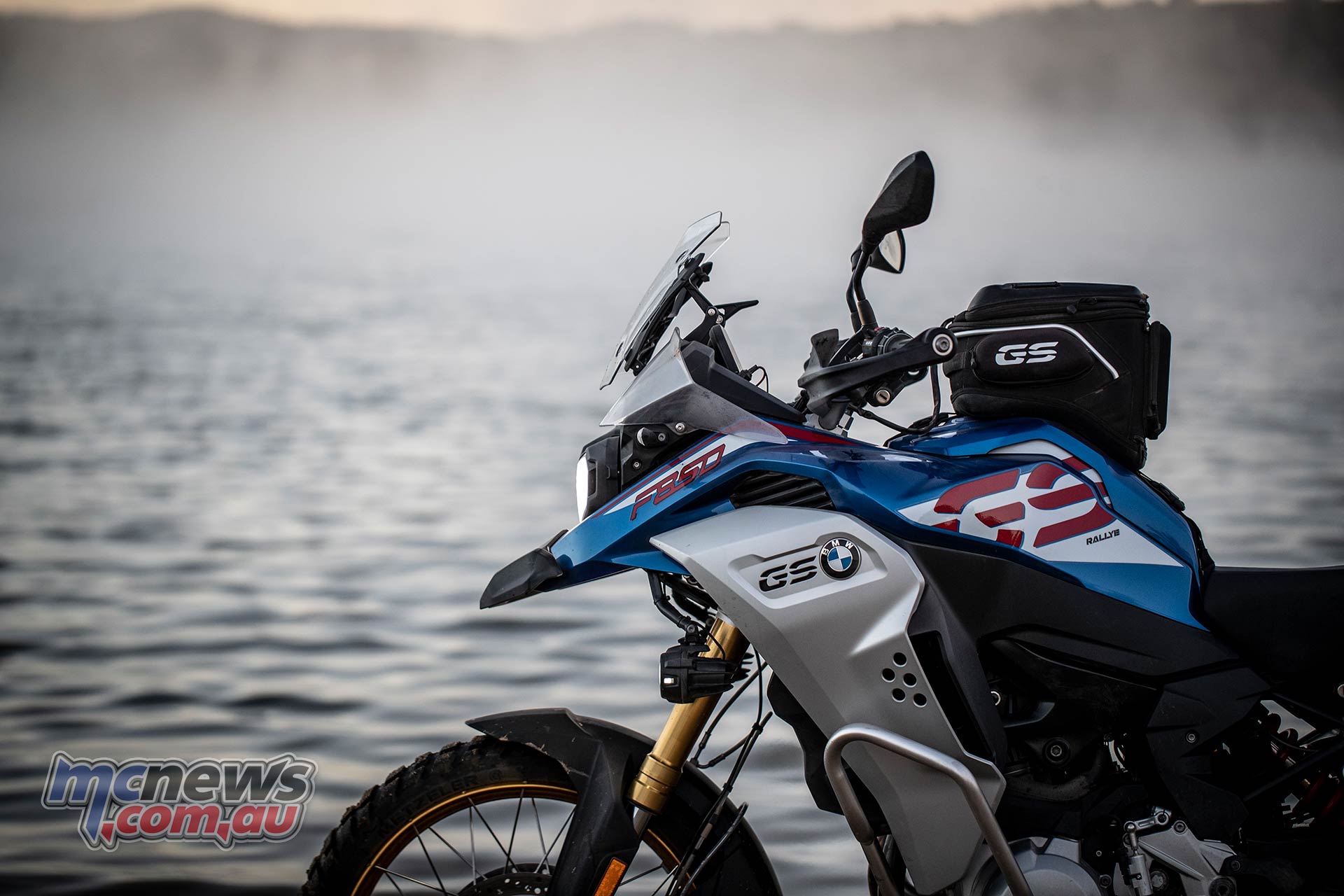
The long running 360-degree crank lay-out has been swapped for a new 270/450-degree and 90-degree journal offset. These changes have transformed the character of the engine, it is a transformation I like.
BMW now claim 95 hp, at a slightly higher 8250 rpm in comparison to the outgoing 800s 85 hp at 7500 rpm. Torque is up by a similar amount, now 92 Nm at 6250 rpm.
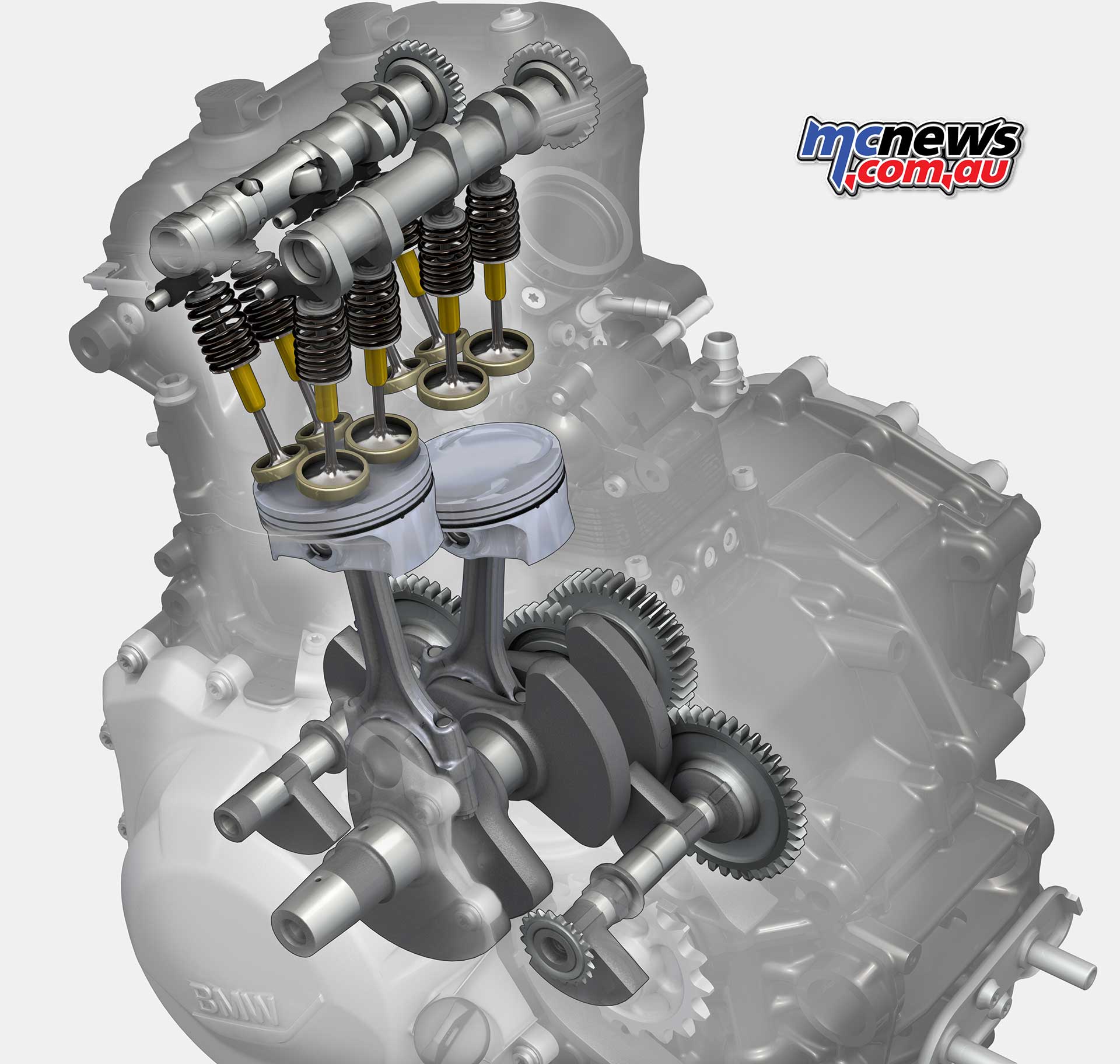
It is not only the 10 horsepower boost, but also the added mongrel that the new configuration gives the bike that makes the real difference for me. A much higher compression ratio than before is also a factor in that increased urgency of the power delivery no doubt.
It is still far from threatening or in any way unruly, and certainly doesn’t have the monster torque that is always but a twitch of the wrist away on big brother R 1200 GS, but it sure is a hell of a lot more fun than its predecessor, and will still take you north of the double metric ton.
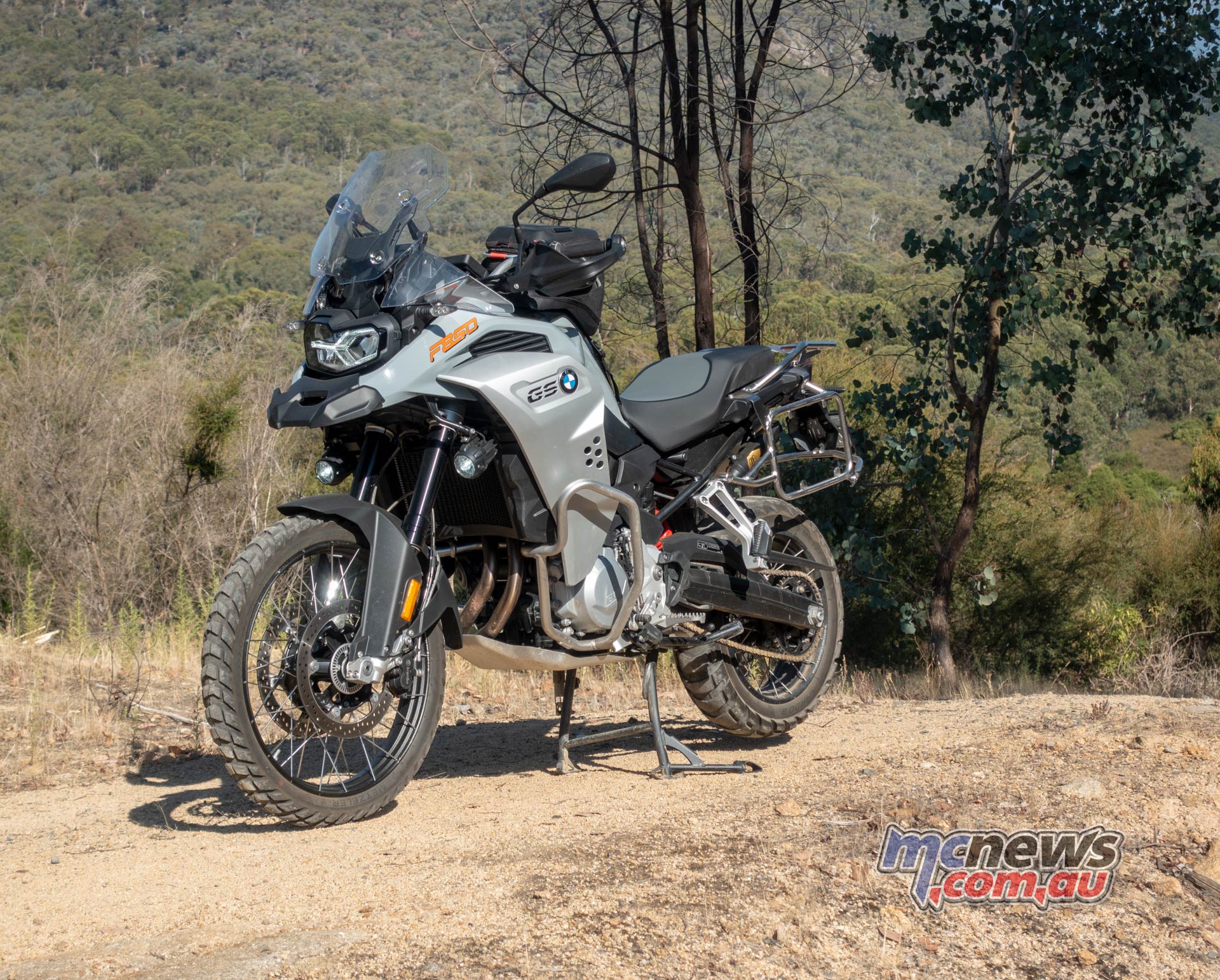
If you do like your engine a little softer, and there are plenty that do, then there is always the F 750 GS, which despite displacing the same 853cc capacity as the 850, has 18 less horsepower, and is tuned to be much less threatening for newer adventure riders. There are plenty of skilled and experienced adventure riders that favour the lesser engine, due to their softer nature that makes grip easier to find, and muscles less tired at the end of the day.
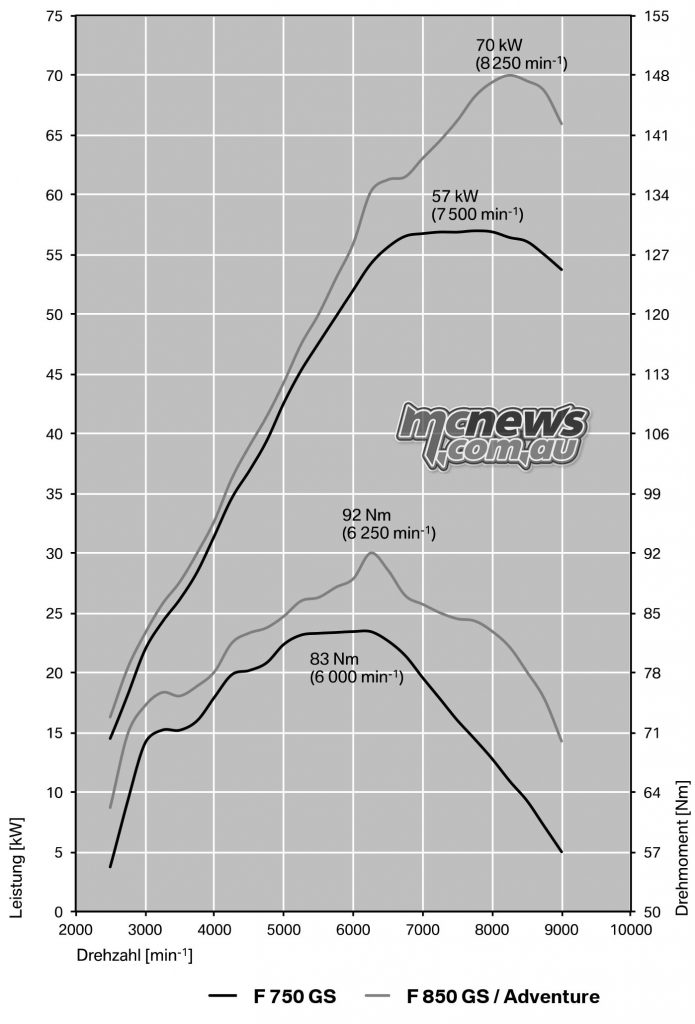
Off a closed or ever so slightly open throttle, while negotiating traffic or with lots of stop-start work in traffic, I did not gel with the new engine. I suspect that this is due to some sort of anti-stall feature, or the like, taking over and giving the engine more revs than I want it too when I am on and off the clutch at low speeds. Annoying.
That foible aside though, the engine proves strong enough to power my grins much wider than its predecessor and is truly fit for purpose. It likes to rev and remains smooth even when playing up around 8250 rpm power peak.
The F 850 GS Adventure I spent time with is the ‘Tour’ version. This is one of five variants of the F 850 GS Adventure that BMW sells in Australia. The range starts with the F 850 GSA at $19,290, plus on road costs, and tops out with the F 850 GSA Tour, as I rode, and the F 850 GS Rallye X, both of which sell for $24,165 +ORC.
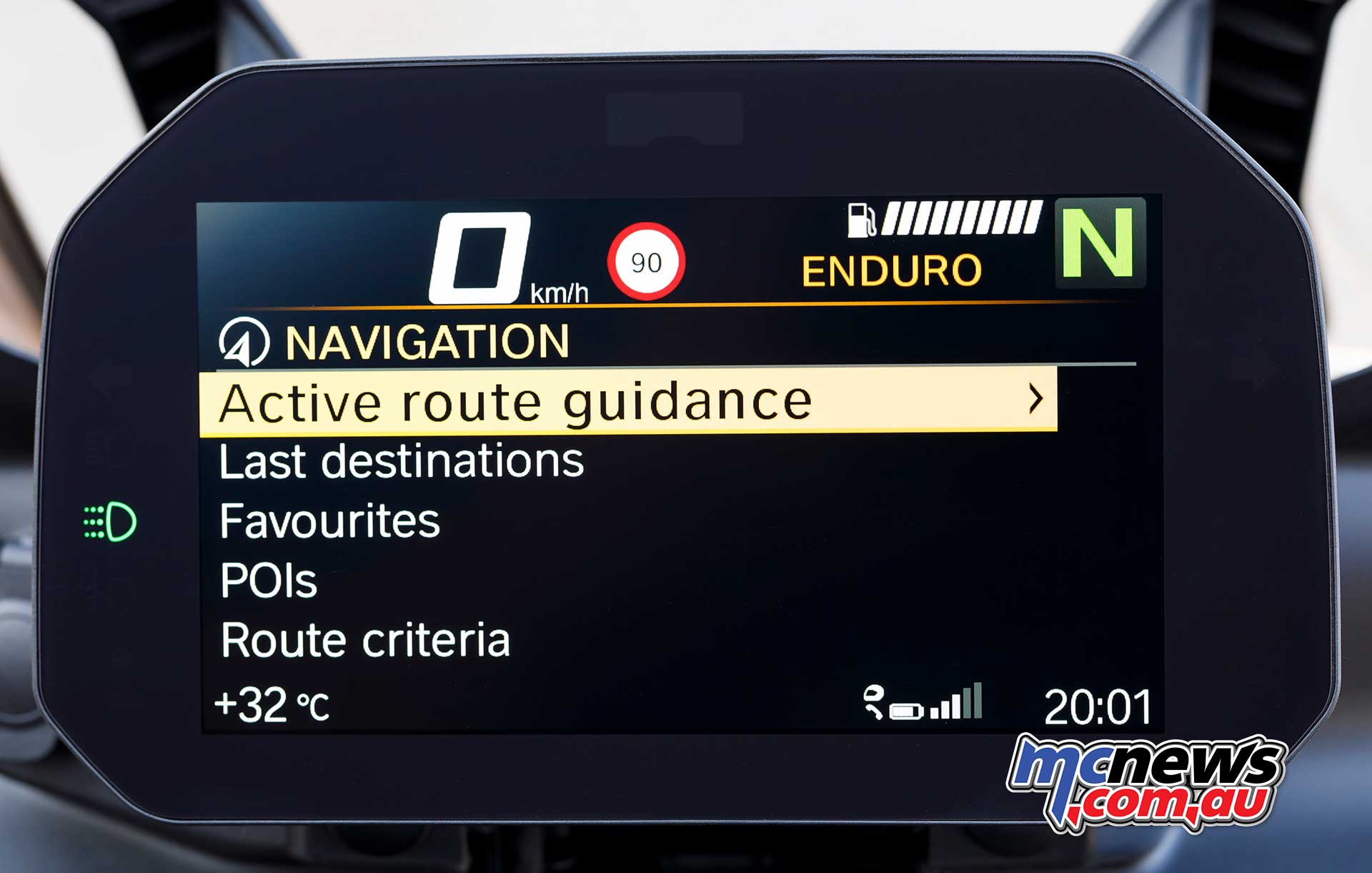
Basically this means that the Granite Grey Metallic bike I rode had the Comfort Package, Touring Package, Dynamic Package and Lights Package, that form the ‘Tour’ kit. The test bike also had the optional 6.5” colour TFT display with connectivity, which when paired with your smartphone provides navigation prompts, along with the facility to control your calls and music via the intuitive multi-controller on the left bar. Bavarian Burger with the lot then.
All F 850 Adventure models boast, as standard kit, a 23-litre fuel tank, spoked rims with a 21-inch front more suited to off-road use, a bigger screen and hand-guards, along with engine protection bars and a stainless steel luggage rack.
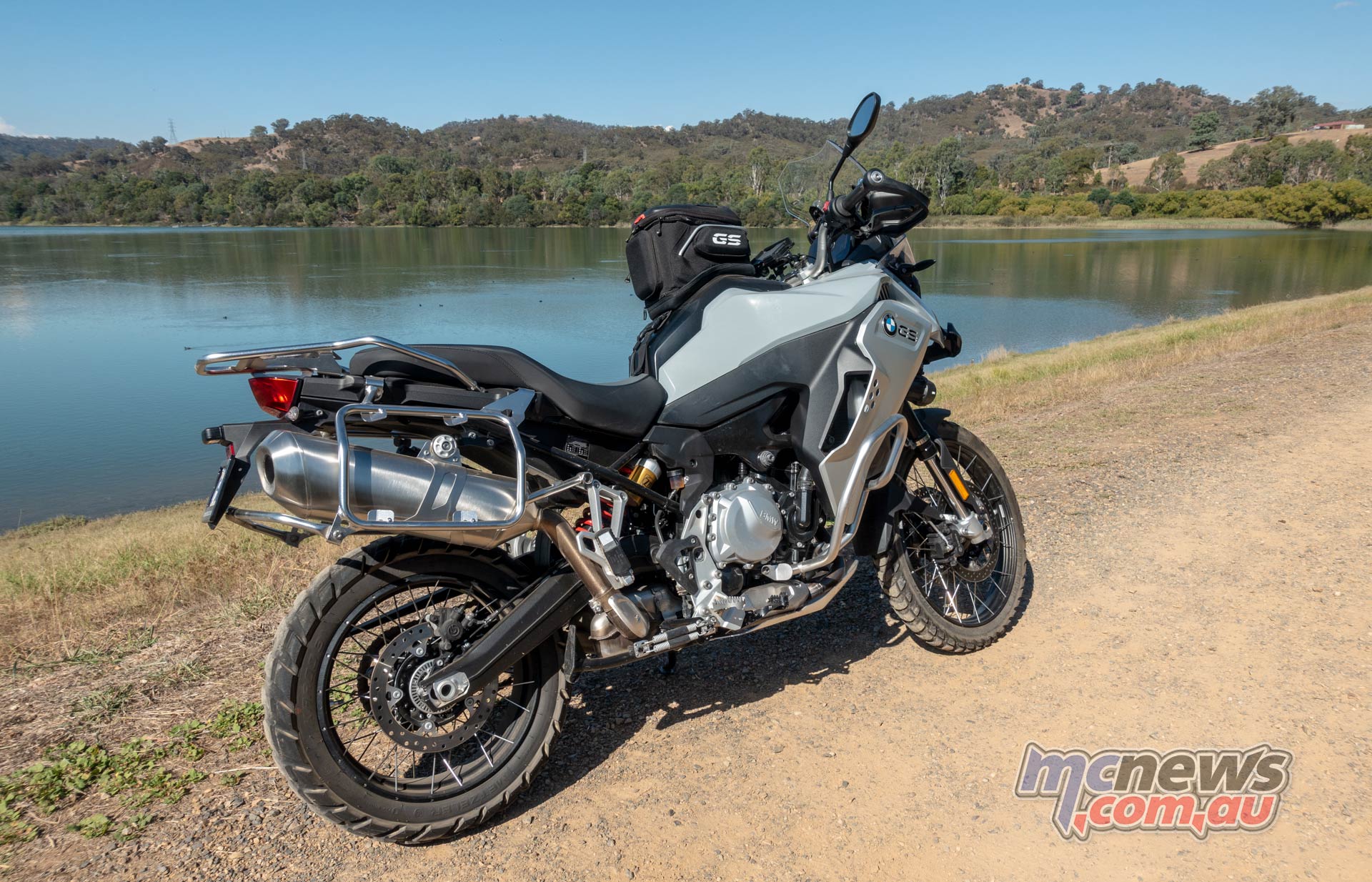
So it is no trimmed down off-roader then, but instead a fully fledged adventure motorcycle capable of carrying a rider and luggage as far and wide as they dare. It is also a lot more manageable than a lot of the larger capacity adventure bikes, be that off-road, in the parking lot, or getting on and off the bike. The smaller size is less daunting, and easier to manage.
In fact, the amount of leverage from the wide bars and the very light steering can make you feel like a bit of a tool at first. I was always over-compensating at low speeds, applying too much pressure to the bars, then having to bring them back again, made me look like a beginner! It is also very easy to get the F 850 GS Adventure on and off the centre-stand (fitted as part of the Comfort/Touring package).
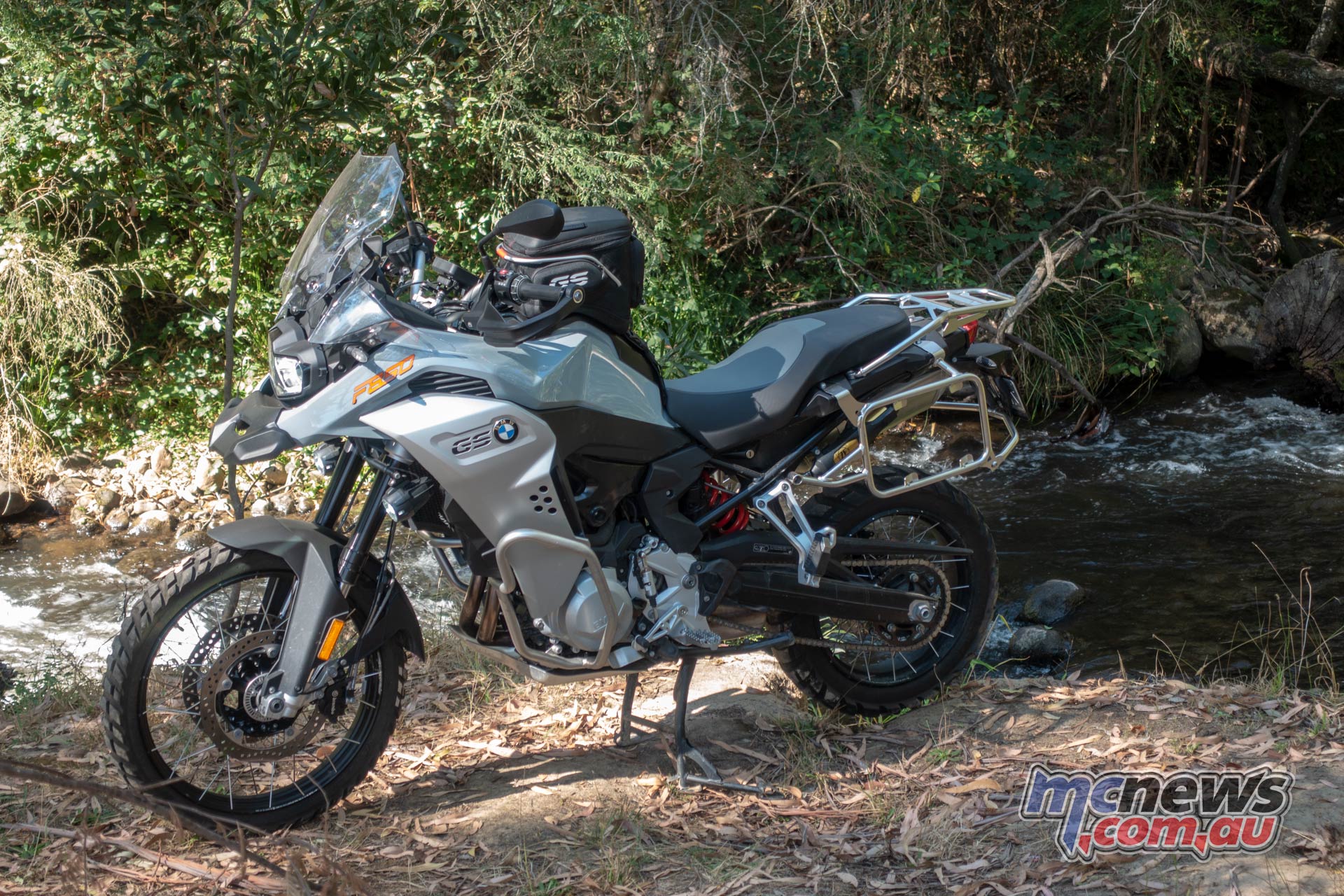
The quick-shifter, dubbed Gear Shift Assist Pro in BMW parlance, and fitted as part of the Dynamic/Lights package, is a two-way affair and amongst the best in the business. The new gearbox itself is also far better than I remember experiencing on any previous BMW F bike, even neutral is incredibly easy to find, and the slip-assist clutch is incredibly light. Drive is now transferred to the chain on the more customary left side of the motorcycle, where previous F series twins had a right-side chain drive. The chain was overdue for its initial break-in adjustment at the end of my ride, but still the shifts were sweet.
Braking power is typical BMW, strong and progressive. That is despite them not being the de rigueur radial mount jobs, but relatively old school floating twin-piston Brembos. There is nothing to complain about. Likewise the ABS response is benchmark stuff.
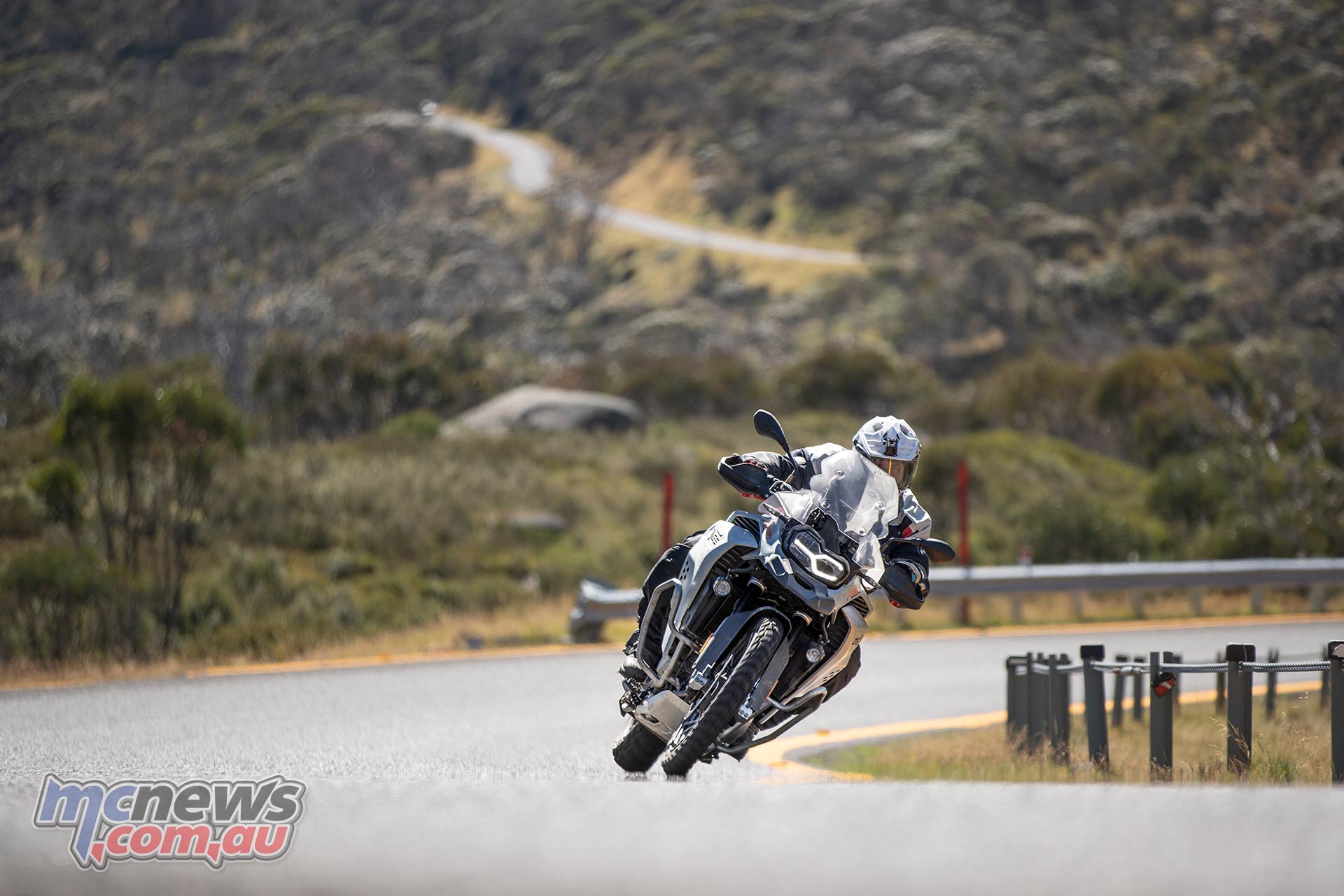
A new steel monocoque frame employs the engine as a stressed member and sports much changed geometry from its trellis framed predecessor. It also allows the fuel tank to be moved into the more traditional position, and filled from the top of the motorcycle in the conventional way. This means you have to un-clip and move to one side the optional tank-bag in order to fill, but that’s no real bother.
New 43mm inverted forks slide through 230mm of travel and offer no adjustment. Nada, nothing, zip. Good job they work well enough then isn’t it… Unless you hit something big unexpectedly, you are not going to crash through the damping hard enough to bottom these forks out as they generally sit in the mid-stroke and perform adequately. Despite offering less travel than the 800, they offer much finer damping control throughout the stroke and are much more resistant to diving under brakes.
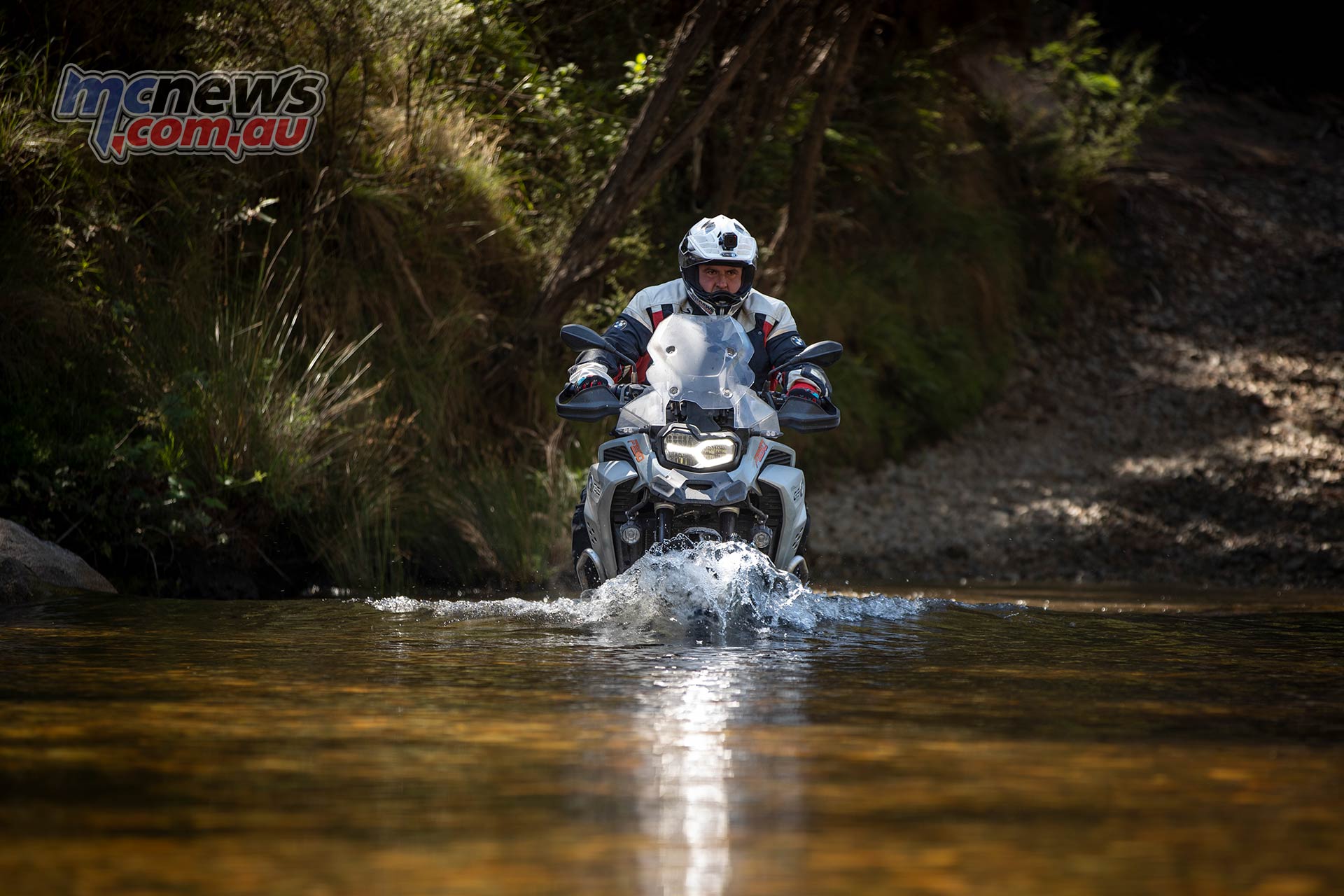
The standard rear shock offers preload and rebound damping adjustments and on our test machine they were taken care of via the Dynamic ESA that is part of the Comfort/Touring package that is standard on the Tour. It worked faultlessly, and I think it is the ESA that enables good performance across such a wide range of uses and terrain despite only having 215 mm of travel to play with. Essentially, the ESA makes up for not having a lot more travel. I am unfortunately not in a position to evaluate the standard rear shock, only having experienced an ESA equipped model.
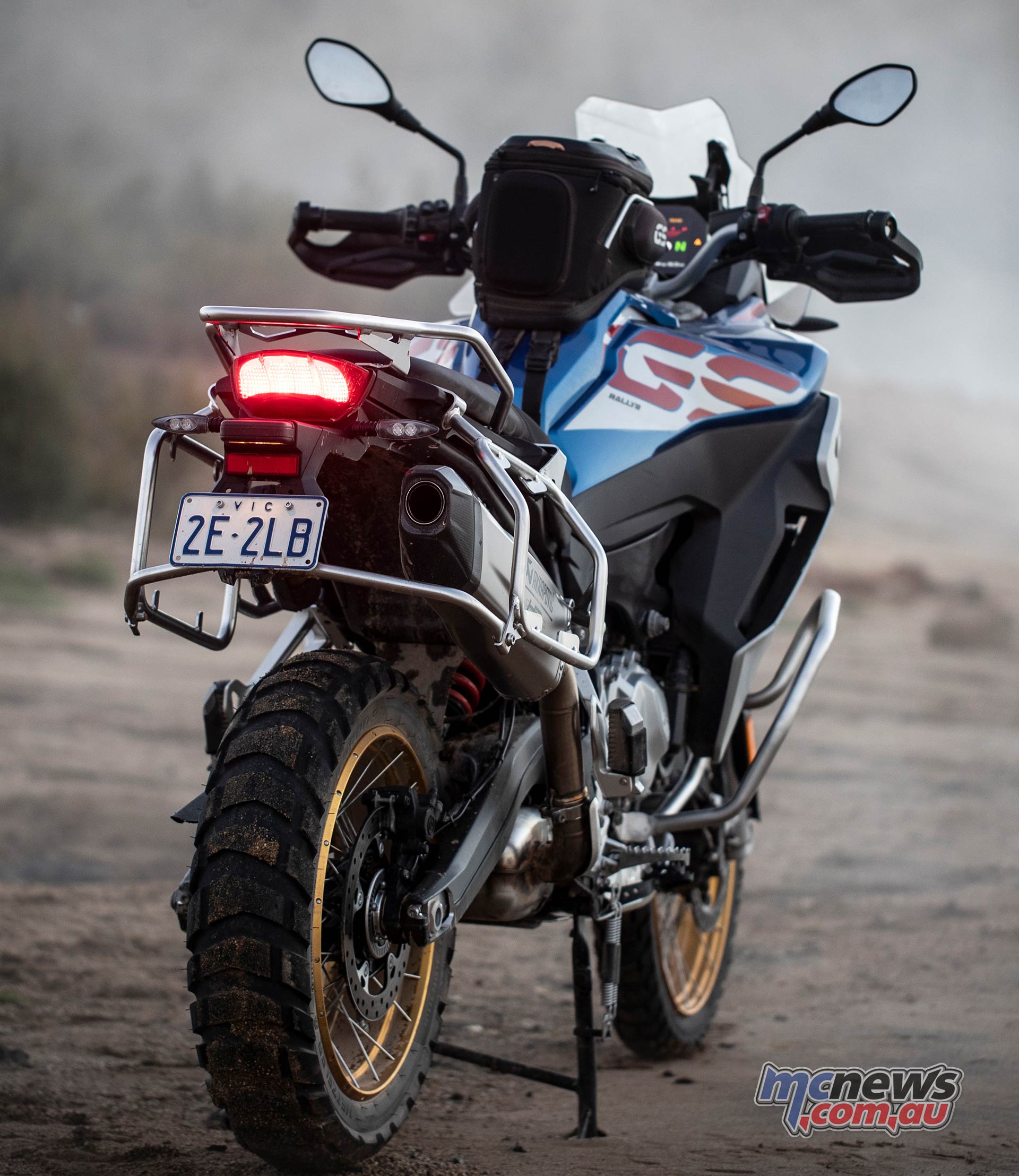
In the ’Road’ and ‘Rain’ modes the shock response is, as you would figure, automatically set-up for those conditions while in ‘Enduro’ and ‘Enduro Pro’ the set-up is slanted towards the demands of off-road riding. If having a crack on the road then ‘Dynamic’ can be selected which tautens things up for more sporty riding. Riding modes can be changed easily on the run and unlike most manufacturers, BMW also allow you to turn traction control off while on the run with a simple press of a bar mounted button. Nice! And if you turn the bike off, it remembers which mode you had selected, instead of defaulting back to maximum nanny mode. Again, well done BMW!
Our bike was shod with Metzeler Karoo 3 rubber more suited to our primarily off-road route. While you can’t really attack corners at full tilt on entry, a surprising pace can still be cut on the road with these tyres and once settled in a turn you can still drag the pegs if you’re really keen.

Despite the 90/90-21 front hoop the bike steers and holds a line well enough, and still makes for an enjoyable fang on the road. It was a little bit more fun in this role than I had expected to be honest, and a lot more enjoyable than the 800 ever was on the road.
The F 850 GS Adventure though is primarily all about touring, and in that role the machine excels. Even on the base model you get a comfortable seat, great ergonomics, reasonable weather protection, long travel suspension, a massive range of luggage options, heated grips, cruise control, stability control, and a 12-volt power socket, even if it is one of those stupid merit style ones. Just give us a simple USB port FFS!
Also standard, even on the base model, is the adjustable touring windshield (easy to adjust on the go), adjustable levers, a plastic engine guard and a stainless steel rear luggage rack to strap gear-bags too, or to fit the optional aluminium top-case on.
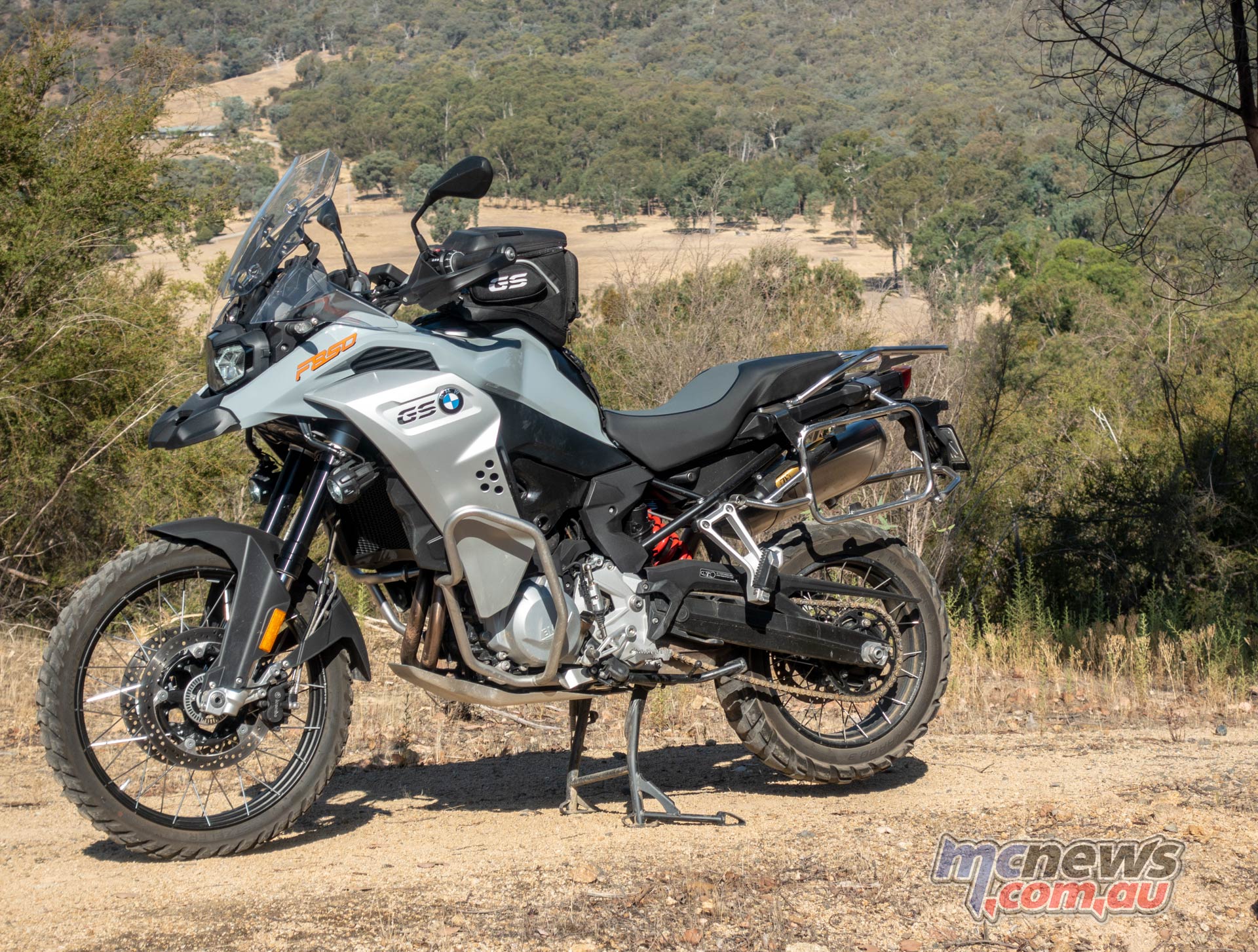
The fact that the cross-spoked rims are also tubeless compatible is another feature not to be sneezed at as it simplifies puncture repairs out in the wilds.
Our ‘Tour’ variant then adds keyless ride (keep the key in your pocket), tyre pressure monitoring, a centre-stand, Dynamic ESA (rear only), side pannier mounts (for the optional aluminium panniers or as a base to stay your own soft throw over bags to), the mounting bracketry and power supply for the optional Navigator, a higher spec’ of dynamic traction control and ABS, two-way quick-shifter, all the Pro riding modes, and the full gamut of LED lighting in all the normal places plus additional fog lights. So certainly ready for any adventure! And capable of over 500 km between refills while touring.
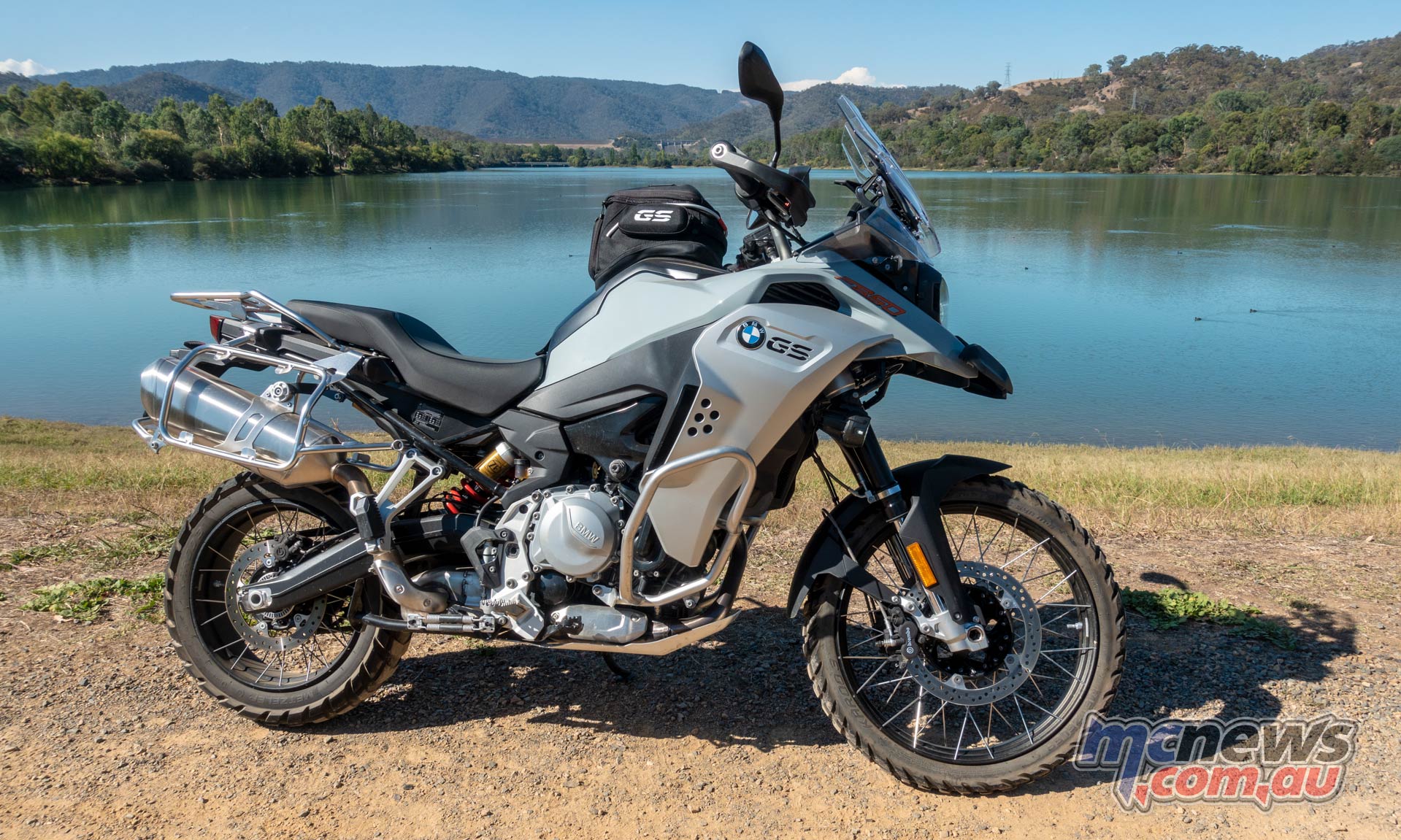
BMW specs’ state that with that big fuel tank full and ready to roll that the F 850 GS Adventure tips the scales at 244kg. I have to say that it does an incredible job of hiding that mass, it never feels like a really big, ponderous and heavy adventure bike. You are certainly aware of its size, and the damage that may be done if you have a tip over, but, to be honest, I would say it feels a good 25kg lighter than those specs suggest and is certainly not as intimidating as its boxer powered big brothers. And despite being a few kg heavier than the out-going F 800 GSA, the new 850 feels lighter, smaller, more compact.
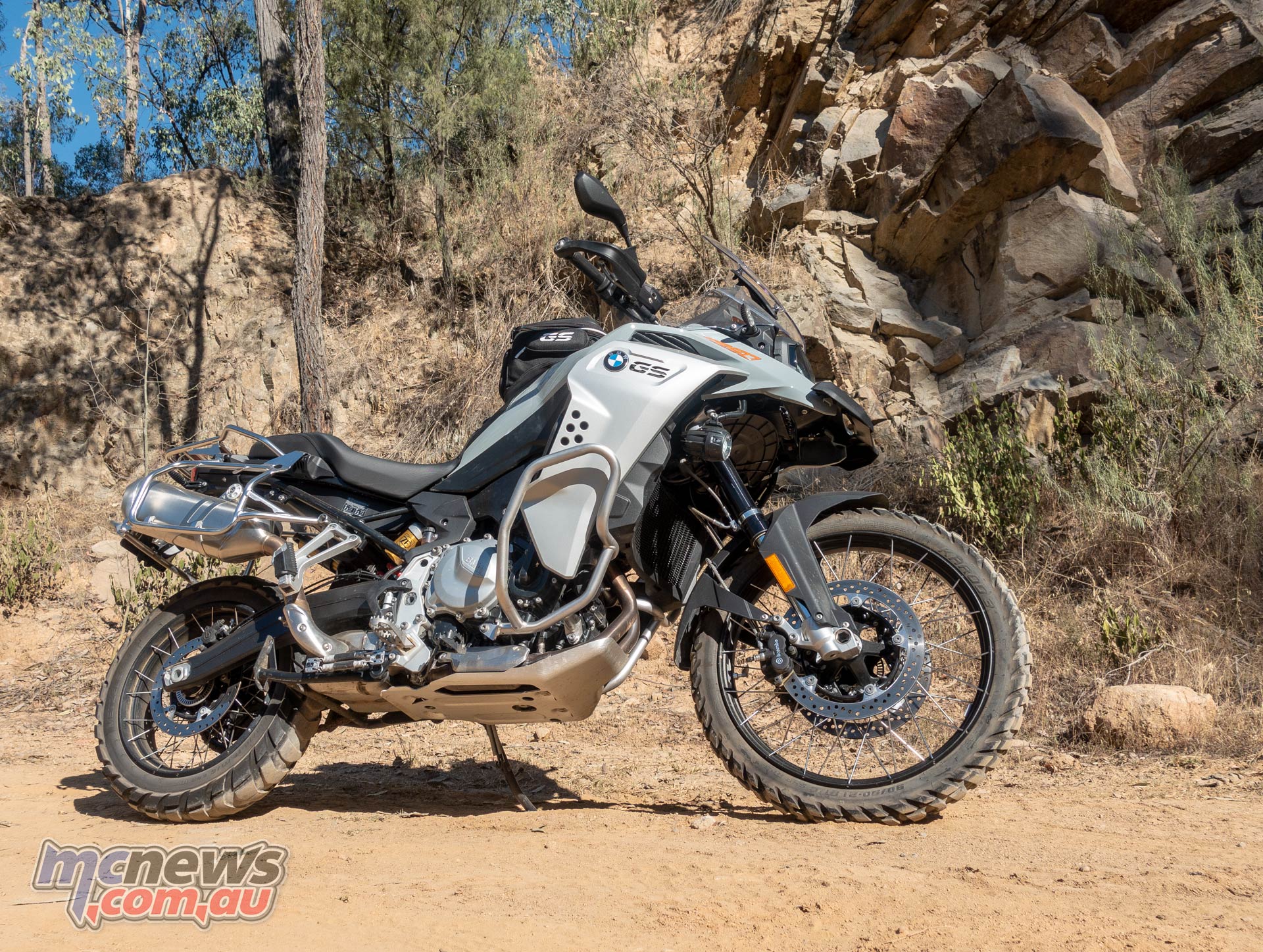
The standard seat height is 875 mm (fractionally lower than its 800 predecessor), or 835 mm with the low seat. There is also an LS model for shorties fitted with a lower suspension package, which means 20 mm less suspension travel, and no ESA, but also lowers the perch to a more manageable 815mm. Those that have more generous proportions can also opt for a Rallye seat that raises the in-seam game to 890mm. The standard seat was manageable for my 178cm height and getting on/off the bike was easy enough. Moving the fuel tank to the more conventional position has actually helped slim the bike through the middle and rear of the machine. That the centre-stand is so easy to use is another boon for shorties.
Despite the marginally shorter seat height, ground clearance is improved thanks, in part, to the move to a dry sump engine, along with a myriad of other changes.
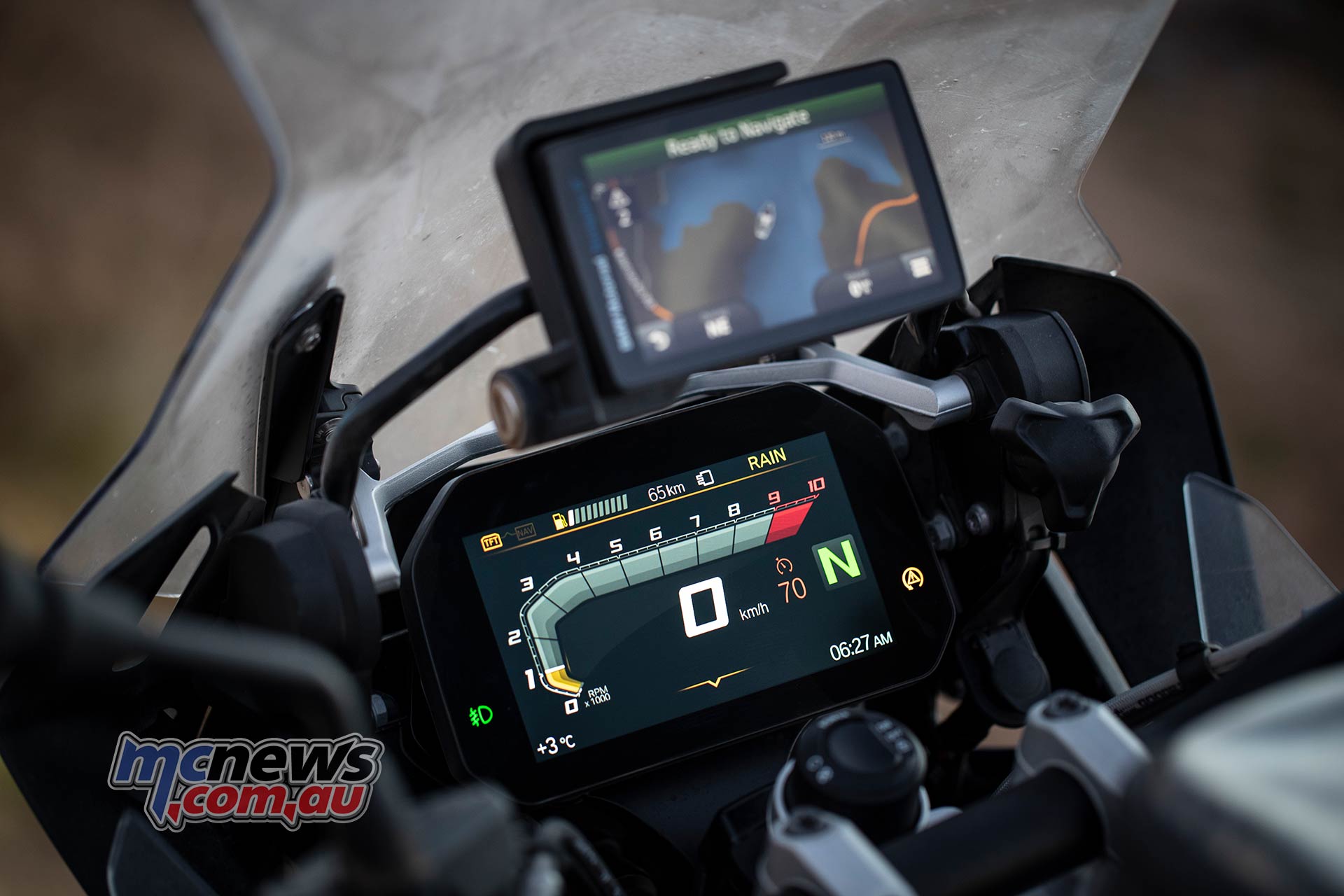
The switchgear is great and intuitively laid out. Married with the optional TFT display the set-up is about as good as motorcycle cockpits get, truly state of the art.
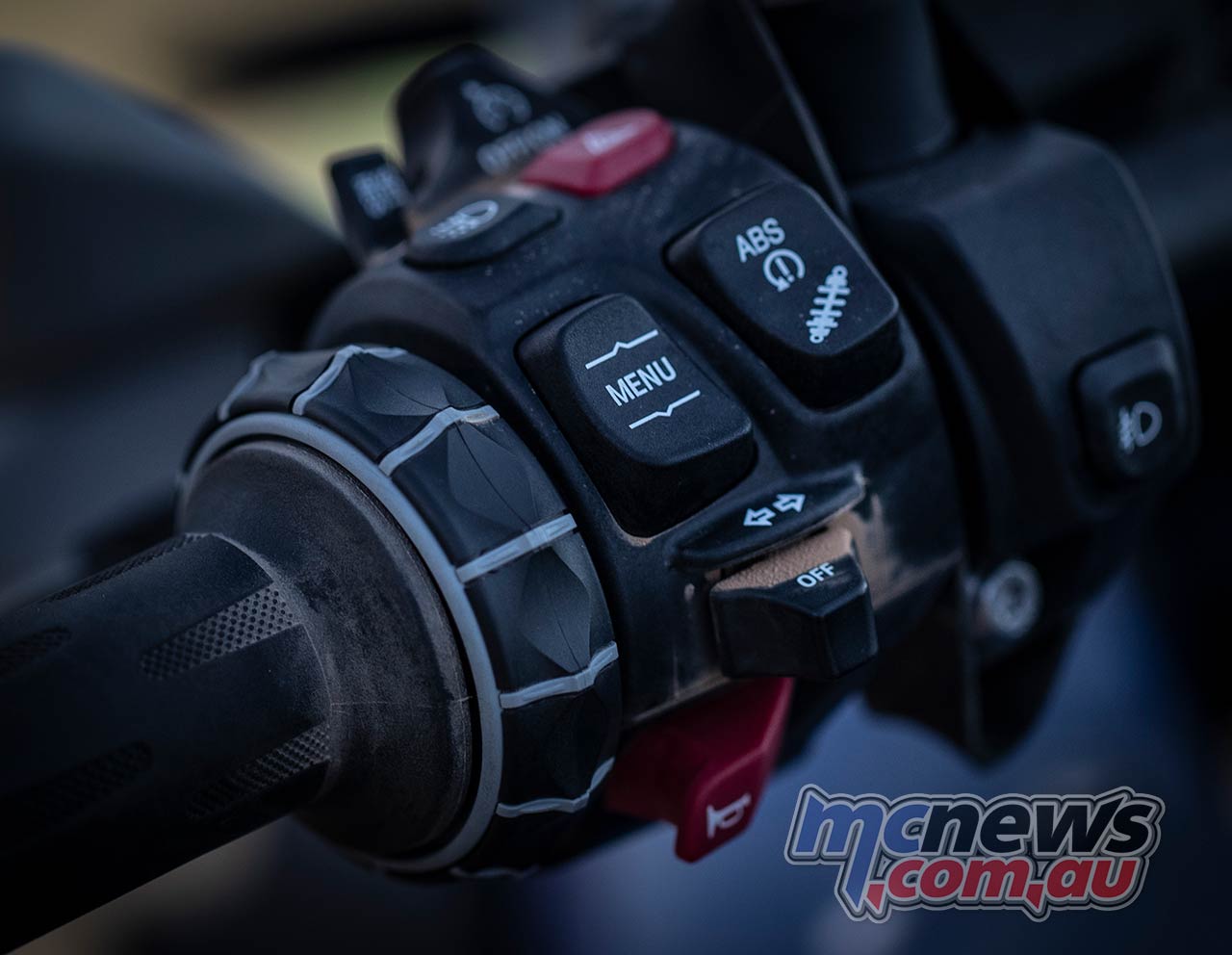
All in all the 850 is a very worthwhile upgrade from the 800, particularly with its extra on road performance. In the Adventure guise, as tested here, the price of admission is certainly at the upper end of the scale, but likewise the level of kit provided, even in base specification, is really quite impressive and helps to justify that pricing. The extra performance has also, for the first time, moved the F bike into my own consciousness as a genuine alternative to big brother R1200/R1250.
BMW now offering a standard three-year warranty is a great boon for their customers, and I sincerely hope other brands follow their example. To add more peace of mind, in regards to future ownership expenses, you can also choose to purchase a pre-paid service plan that covers all scheduled servicing over the first few years of ownership. Great stuff BMW Motorrad Australia.
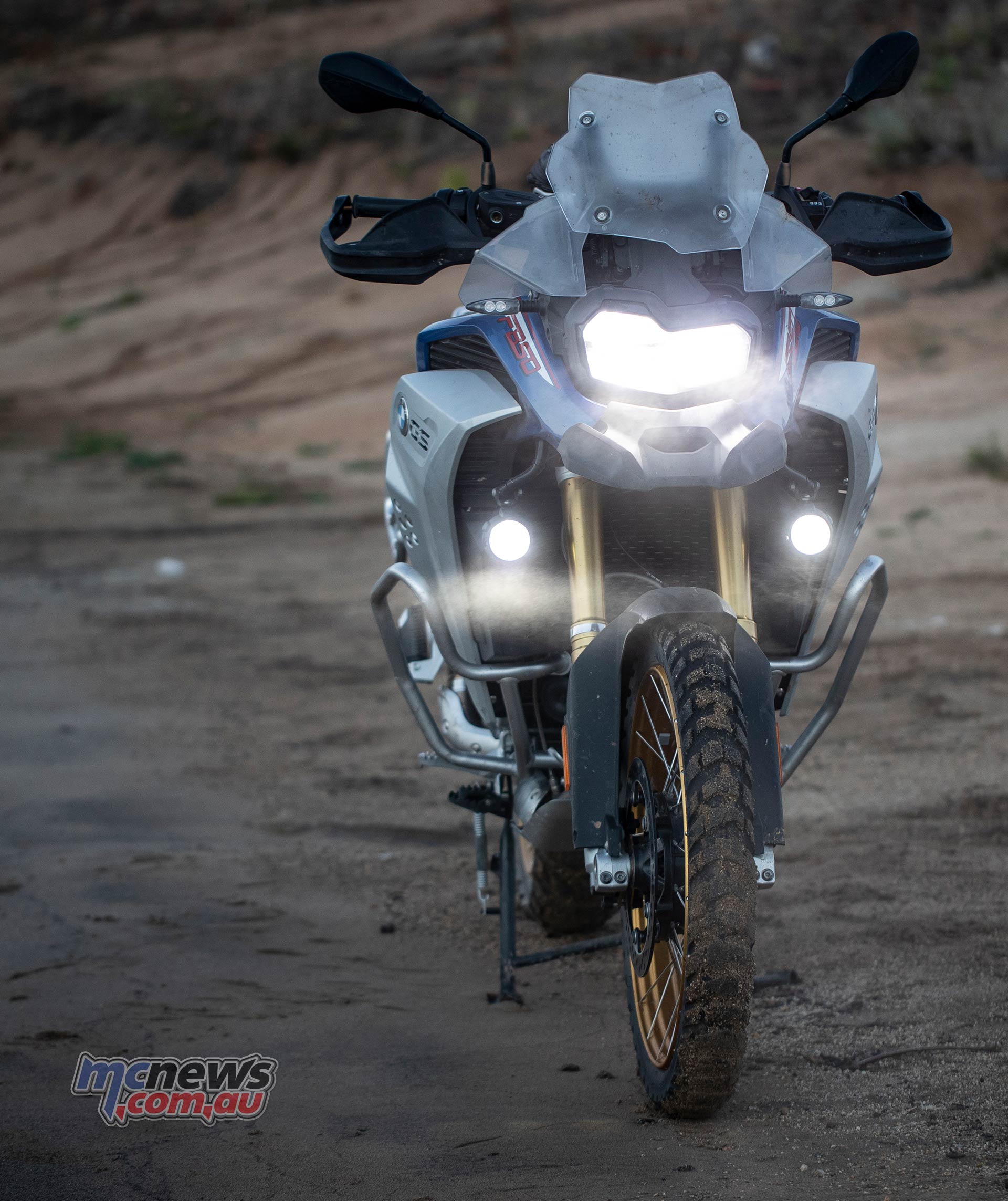
| 2019 BMW F 850 GS Adventure Specifications | |
| Engine | |
| Capacity | 853 cc |
| Bore/stroke | 84 mm / 77 mm |
| Output | 70 kW/95 hp |
| At engine speed | 8,250 rpm |
| Torque | 92 Nm |
| At engine speed | 6,250 rpm |
| Type | Water-cooled 2-cylinder 4-stroke engine with four rocker arm operated valves per cylinder, two overhead camshafts and dry sump lubrication |
| Compression | 12.7/1 |
| Fuel | Premium unleaded95 RON (option: 91 (RON) |
| Valve control | DOHC (double overhead camshaft), rocker arms |
| Valves per cylinder | 4 |
| Intake/outlet | 33.5 mm / 27.2 mm |
| Throttle valves | 48 mm |
| Engine control | BMS-M |
| Emission control | Closed-loop three-way catalytic converter, exhaust standard EU-4 |
| Electrical System | |
| Alternator | 416 W |
| Battery | 12/10 V/Ah |
| Headlamp | High beam/low beam: 12 V/55 W Halogen(OE: LED headlight incl. LED daytime running light) |
| Rear light | LED brake light/rear light |
| Starter | 0.9 kW |
| Power Transmission – Gearbox | |
| Clutch | Multiplate wet clutch (anti-hopping), mechanically controlled |
| Gearbox | Constant-mesh 6-speed gearbox, integrated in the engine housing |
| Primary ratio | 1.821 |
| I | 2.833 |
| II | 2.067 |
| III. | 1.600 |
| IV. | 1.308 |
| V | 1.103 |
| VI | 0.968 |
| Secondary drive | Endless O-ring chain, jerk damping in the rear wheel hub |
| Secondary ratio | 2.588 |
| Suspension | |
| Frame construction type | Steel bridge frame in monocoque design, load-bearing engine |
| Front wheel control | USD fork 43 mm |
| Rear wheel control | Aluminium double-sided swing arm, directly mounted central spring strut (F850 GS: Travel-dependent damping),spring rest hydraulically adjustable, rebound damping adjustable (Option: Dynamic ESA) |
| Spring travel, front/rear | 230/215 mm |
| Wheel castor | 124.6 mm |
| Wheelbase | 1,593 mm |
| Steering head angle | 62 ° |
| Brakes Front | Hydraulically activated twin disc brake, Ø 305 mm, 2-piston floating caliper |
| Brake Rear | Hydraulically activated single disc brake, Ø 265mm, 1-piston floating caliper |
| ABS | BMW Motorrad ABSas standard, disengageable |
| Wheels | Cross-spoke wheels |
| Front | 2.15 x 21” |
| Rear | 4.25 x 17″ |
| Tyres Front | 90/9021 |
| Tyres Rear | 150/70 R17 |
| Dimensions/Weights | |
| Total length | 2,300 mm |
| Total width including mirrors | 939 mm |
| Seat height | 875 mm (OE low seat 835) mm (OE lowering 815) mm (OE DSB lowering 860) mm (Accessory: Rallye SB seat 890) mm |
| DIN unladen weight, road ready | 244 kg |
| Permitted total weight | 455 kg |
| Fuel tank capacity | 23 l |
| Performance | |
| Fuel consumption (WMTC) | 4.1 l/100 km |
| CO2 emissions (WMTC): | 98 g/km |
| Acceleration 0-100 km/h | 3.8 s |
